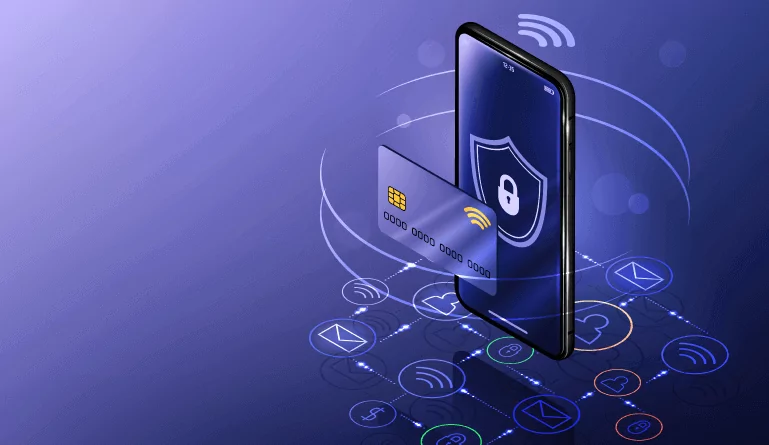National Computer Security Day was established in 1988, about the time when computers were becoming mainstream, albeit, not yet ubiquitous in households. Today, with the current degree of digital proliferation at home and in enterprise settings, Computer Security Day, observed on November 30 every year, is more important than ever before. Automation is one of the key tools that can help simplify the security of your computers and other endpoint systems.
Your IT teams may devote more time to complicated projects with the help of automation solutions for IT systems, as opposed to mundane, repetitive chores like provisioning and scripting. A substitute that is automated avoids the need to complete security procedures individually. It also allows you to gain from additional integrations, like plugging in a threat intelligence database to automatically fetch data and raise triggers.
By 2027, the global market for security coordination, automation, and response management, will reach $2.3 billion, up from $1.1 billion in 2022.
What is an Automated Security System?
As a means to integrate security procedures, applications, and infrastructure, security automation is the utilization of technology that executes tasks with decreased human intervention. An automated security system can have several aspects. It can automatically fetch data, move data between systems, automatically notify users or IT managers, or provide options for self-service. The goal is to minimize human effort as much as possible and increase the breadth of your computer security coverage.
Why do you Need Security Automation?
As the scale and complexity of infrastructure and networks expand, it becomes more challenging to manually monitor security and compliance.
Manual operations may result in delays in problem identification and resolution, inaccuracies in resource management, and uneven policy implementation, leaving your systems open to compliance concerns and cyberattacks. This may result in unanticipated, costly downtime and overall decreased functioning.
Automation may assist in streamlining everyday operations and integrating cybersecurity within IT architecture, systems, hybrid cloud frameworks, as well as apps from the outset. According to a survey by Red Hat, fully adopting security automation may minimize the average cost of a data breach by 95%.
Benefits of Security Automation
By automating cybersecurity and your overall security posture, you can achieve the following:
1. Mitigate alert fatigue when IT teams face a constant barrage of notifications
In cybersecurity, alert fatigue is a significant problem, which occurs when professionals are overloaded with notifications of potential issues and cannot examine them all. It increases reaction time and degrades investigation quality. In addition, the overwhelming amount of security alerts makes it difficult to detect and address major security issues; analysts cannot, so to speak, differentiate the noise from the signal.
Using automated security solutions, the majority of threat-hunting duties will be performed automatically based on predefined protocols, and the most urgent will be forwarded to the appropriate reaction team.
2. Keep sensitive data safe and secure, out of prying human eyes
If you handle sensitive data, store user information, or specialize in maintaining a safe and protected environment for your consumers, security automation is indeed an appropriate solution for your organization. It will help your organization to save costs as well as time that would otherwise be spent on manually handling intrusion detection and will significantly enhance your detection skills.
First, an automated security system can catch data breaches much faster than a manual approach, since it monitors even the subtlest of signals 24/7. Second, as human IT professionals are not handling security data, you gain another layer of privacy and protection.
3. Avoid risks arising from negligence
Manual security requires dependence on memory and the maintenance of security architecture. This might place a great deal of additional responsibility on a team. It is much simpler to utilize an automated service so that you don’t have to worry about security, allowing you to focus on other business activities while your organization stays safe.
4. Prioritize threats so that expert human effort is optimally used
Automated security mechanisms not only identify threats more efficiently and precisely than manual detection, but they may also prioritize these threats according to their risk level. When low-level risks are filtered out by automated procedures, your internal staff is better able to recognize and deal with problems that require intelligent evaluation.
Enterprises must closely monitor threat detection as well as response times, and automated solutions may drastically minimize the period of time a risk can remain live on a network.
5. Couple security automation with software testing
During the development phase, advanced security may be ensured via automated security activities. When software is being developed, you can use a sandbox at the testing stage to fully simulate the application’s behavior under different threats. Automation detects possible risks and weaknesses, enabling developers to immediately address the concerns. Specifically, security automation facilitates the use of threat information to assess the attack surface and prioritize threats prior to the deployment of a program.
6. Get more returns from your security investments
Consider what additional tasks your team can achieve when some components of your cybersecurity protection are handled by automated solutions. The restoration of this additional time and energy to the internal security team is a significant advantage of strategic automation for your business. The automation of security significantly decreases work hours and staff expenses. Dashboards, as well as reporting, make it simple to monitor these numbers, allowing security officials to assess the effectiveness of their actions.
If staffing is a problem, automation empowers your current workforce. Similarly, if you’re having difficulty connecting existing cloud services with security solutions, security automation systems provide many integrations with every product. Ultimately, this makes it possible to optimize your IT ROI overall.
How to Get Started with an Automated Security System?
Using robotic process automation (RPA) bots, endpoint detection and response (EDR) or extended Detection and Response (XDR) technologies, or bringing on board a security orchestration, automation, and response (SOAR) platform is the three ways organizations may automate their security posture.
RPA services often use the notion of a software “robot” that automates tasks on a virtualization-led computer network using mouse and keyboard instructions. RPA has the disadvantage of only performing simple tasks.
Extended Detection and Response (XDR) technologies represent the advancement of endpoint detection and response (EDR) as well as network detection and response technologies (NDR). They aggregate data from the whole threat or security landscape, encompassing terminals, network connections, and cloud systems, enabling them to spot evasive threats that camouflage themselves across security layers and silos. However, they are not well suited to go beyond computers and other endpoints and cover networks or the cloud.
SOAR systems refer to a suite of tools that allow enterprises to automatically gather data on security risks and react to security occurrences. This category was established by Gartner and pertains to any instrument capable of identifying, prioritizing, harmonizing, and automating incident response tasks.
Preparing the foundations
Before getting started with any of these three systems, companies need to prepare the foundations. Identify the security incidents that happen most frequently and need the most time to analyze and resolve. Then, establish use cases and develop a list of security automation advantages and opportunities.
Once you have identified all the security jobs that can be automated, you must acknowledge that you cannot automate them all at once. By initiating small, bite-sized acts of automation, you can track your progress, evaluate the outcomes, and make necessary improvements.
Lastly, you will need to train employees on how to successfully use automation technologies. The emphasis on training should not be limited to setting up and running automated procedures. Determine what procedures and tasks must be managed by human operators and how to seamlessly escalate to a human analyst.
For Computer Security Day (30th of November), relook at your organization’s security posture and examine possibilities for automation. After all, with the benefits of automation in areas such as cloud infrastructure management, it only makes sense to extend its impact on security.





